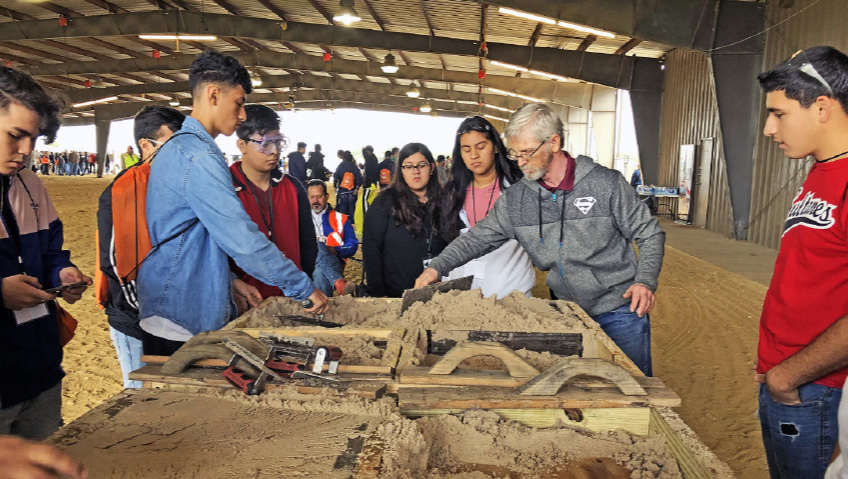It’s no secret that construction companies are struggling to find workers to fill vital job openings. The workforce shortage has officially surpassed half a million in 2023. In order to meet labour demands this year, the construction industry must attract 546,000 new employees on top of the normal hiring pace, Associated Builders and Contractors (ABC) determined using a proprietary model to estimate the numbers.
The labour shortage stems from a complex combination of circumstances working in tandem. Specific circumstances and impacts vary, so an individual construction company may not be affected by all of them. But, in aggregate, these factors have a serious impact on the industry as a whole.
COVID-19 has been one of the most visible factors. As was the case in numerous industries during the upheaval of the pandemic, many construction workers revaluated their career choices, quit their jobs, or retired early in the “great resignation.”
Other workers were forced to find jobs elsewhere during temporary layoffs caused by the shutdown. These employees might have continued to pursue a career in construction but, after settling into new roles, never returned to the industry, even after construction work became available again. The emergence of remote work as a preferable alternative to onsite work strengthened this phenomenon even further.
Numbers continue to drop because Baby Boomer construction workers have reached retirement age and there simply are not enough workers waiting in the wings to replace them. Nearly one out of every four construction workers is older than 55, ABC reports, which means that almost a quarter of the construction workforce is on the cusp of retirement.
The construction industry is failing to attract younger generations. Attitudes toward construction have soured, and today’s youth often perceive the work as too dangerous, exhausting, and dirty, particularly for the compensation received.
Recent educational trends have pushed academics over vocational training—or even displaced vocational opportunities altogether—increasing the negative perception of the trades among younger generations. Young people who do want to pursue a career in the trades may be unable to access the proper training at their school, leaving too few skilled workers to fill the roles of retiring workers.
NPR reports that, even when construction training programs are available, there is a shortage of qualified instructors to fill the teaching positions. In fact, many programs must rely on instructors without substantial on-the-job experience because an experienced construction professional can earn far more working in the trades than teaching them, making it difficult for training programs to compete when it comes to hiring.
Cultural shifts are also playing a role. Today’s youth are known for demanding more out of a job, as opposed to the “grin and bear it” attitude of older generations who may have focused on career advancement over personal satisfaction and wellbeing. As a result, younger workers may be more likely to reject roles that don’t offer the benefits they expect, from higher pay and supportive work environments to parental leave and remote work. With many other jobs offering these benefits, young people have little motivation to go with an offer that doesn’t.
The construction labour shortage has multiple effects, some of which are sending far-reaching ripples beyond the industry itself.
Project delays may be the most obvious consequence of the construction worker shortage. Without enough people to fill all the roles onsite, some projects simply can’t get done on time—or they may not get done at all. NPR points out that, even though President Biden has signed the $1 trillion bipartisan infrastructure bill into law—which will revamp the nation’s roads, bridges, and transit systems—the lack of labourers could negatively impact the industry’s ability to get this massive amount of work completed.
The influx of federal dollars into the industry may not help alleviate the problem. NPR analyzed data tracked by the National Governors’ Association and found that only 57 out of the 414 funding grants included in the trillion-dollar infrastructure bill were actually eligible for funding workforce-related efforts.
Safety is a major concern when it comes to understaffed worksites. Labourers may be overworked, making them more vulnerable to careless mistakes due to fatigue, or they may be assigned a job outside of their area of expertise due to a lack of qualified workers. Safety issues may also arise when there are too few people to cover every task onsite.
Quality control is another serious concern. Having fewer workers onsite puts more demands on each individual. This can lead to rushed, careless work into order to make up for lost time. A lack of workers also means there might not be enough people onsite to catch and correct mistakes.
Consumers may also have to pay more for construction work. As construction companies offer higher wages to keep and attract workers, this naturally raises the final cost of the project. This could, in turn, encourage consumers to put off that construction project they have been considering.
Fortunately, there are proactive steps that construction companies can take to attract and keep workers. The industry may have to step out of its comfort zone, however, in order to navigate the uncharted territory of changing times.
Vigorous public relations efforts are key. If companies don’t actively communicate the positives of working within the industry, then potential workers are likely to maintain negative assumptions about construction jobs. Many young people simply do not know the benefits a career in construction can offer. This is especially true since the trades fell out of favour in the education system.
The construction industry needs to re-brand itself as a solid, lifelong career and take steps to move away from stereotypes of dirty, dangerous worksites. Sharing information about automation and other new technologies utilized in the construction industry may help change the perceptions of tech-minded youth.
Working closely with training programs to offer apprenticeship opportunities is another good way for construction companies to reach young people. Positive experiences combined with accurate information can win over potential employees. On-the-job experience through training and apprenticeship programs prepare potential workers for the job, keeping skilled professionals in the pipeline. The trades need to be promoted in high school as a worthwhile and rewarding career path, rather than pushing college as the only viable option for younger generations. Paid training opportunities are a particularly good way to entice potential workers into the industry.
It goes without saying that construction companies must pay a living wage if they expect to compete with other industries for workers. They also need to provide attractive benefits that will catch the attention of younger generations. These perks should go beyond standard expectations to include anything from gym memberships and paid time off to employee recognition programs and company sponsored events, just to name a few.
Improving the work environment is another way to attract and retain today’s workers. Potential employees have more options than ever—especially with the emergence of remote work—and construction companies must compete. Promoting diversity and inclusion, encouraging healthy work-life balance and reasonable hours, and cultivating a supportive work culture are important steps that companies can take.
Last, but certainly not least, companies need to actively recruit workers who have not traditionally worked—or felt welcome—in construction. Encouraging women to join the industry doubles the amount of potential talent available to hire.
The construction labour shortage is a real concern. But, by proactively working to change perceptions around construction work, provide training opportunities, and meet the needs of today’s workers, the industry has the ability to attract and retain employees—and create new opportunities for people traditionally left out of the sector. The result will be win-win for workers and for the industry as a whole.






